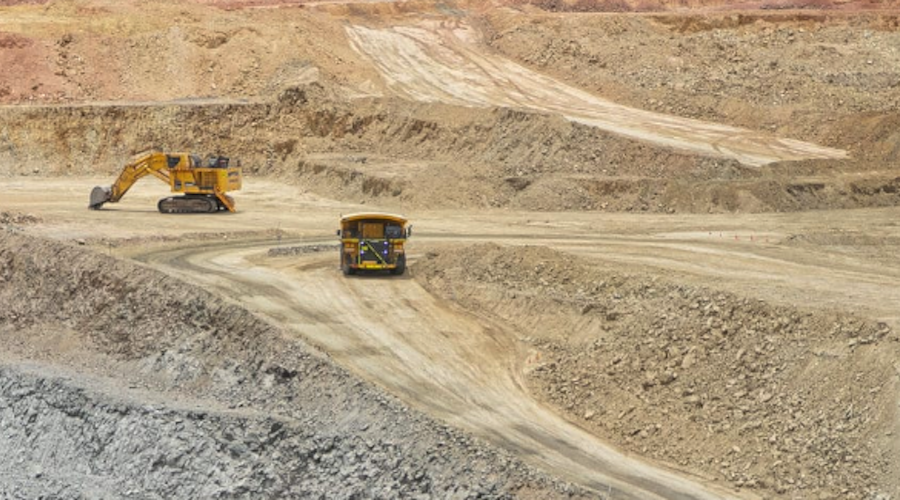Morningstar analysis offers contrarian view on gold, sees $1,820 in five years

Despite gold’s record-breaking rallies and banks doubling down on their bullish price forecasts, one analyst has a contrarian take on where the precious metal stands long term.
According to David Sekera, Morningstar’s chief US market strategist, gold could eventually fall back down to around $1,820 an ounce, a level last seen in October 2023.
This prediction, said Sekera in a Bloomberg interview this week, follows an analysis by the firm’s equity research team into the long-term supply and demand of the metal, taking into consideration the extraction cost of gold over the next five years.
“When we look at gold, it certainly has had an incredible momentum rally over the past year, but what I’m looking at is what’s going on in the market, those factors that have historically resulted in higher gold prices are starting to wane,” said Sekera.
“If I look at real interest rates, that’s always been a big predictor of gold prices; those are positive here in the US, and in fact, we expect real interest rates to probably become even more positive over the course of the next year,” he added.
As for inflation, which is often linked to rising gold prices, Sekera said he expects that to moderate in the US, getting down to the Fed’s target by the end of this year and going into 2026.
Sekera’s call comes on the back of gold setting a new record of $3057.31 per ounce on Wednesday, after US policymakers projected slower growth and higher inflation in the US. In 2025, the gold price has gone up by 16%, extending its run from last year.
Demand-supply dynamics
In explaining his bearish view on gold, the Morningstar strategist cited an old adage in the commodity space: “The cure for high prices is high prices.”
“So in this case, over time, we would expect to see demand destruction for gold,” he predicted, noting that half of the metal’s production is for jewelry, where there is expected to be a “substitution effect” in the coming years. Also, about 10-15% of gold is used for industries, and again, in these cases, manufacturers are expected to substitute into other materials to save costs, Sekera said.
On the supply side, Sekera expects new mines to enter production, though he said “it may take a couple of years” for these to come online as well as to build out new reserves.
Lastly, the he pointed out the cost-cutting measures being carried out by the newly created DOGE (Department of Government Efficiency) under the Trump administration will have an impact on commodity prices.
“Again, it may take the next several years for those to work through, but this does really predicate our long-term gold forecast,” Sekera said. He emphasized that its $1,820 price target will be for the next 4-5 years.
More News
Greece’s Metlen sees gallium production at 50t in 2028, enough to cover EU needs
The Greek company plans to invest 300 million euros in the extraction of gallium from raw materials.
March 27, 2025 | 09:32 am
Gold Road defends rejection of $2.1B takeover bid
Gold Road remains open to discussions with Gold Fields, provided it betters the terms of the original bid.
March 27, 2025 | 08:59 am
{{ commodity.name }}
{{ post.title }}
{{ post.excerpt }}
{{ post.date }}



4 Comments
james bomb
1820? Nah…..
Rusry Nail
The author must be getting paid by JPMorgan, Goldman, Wells Fargo and all the other big Wall Street Banksters who are massively short gold and silver futures.
Michael May
Don’t think so. Gold is no longer a play thing of the Fed/US banks. Gold is global. China and the Global South now massively influence the gold price through enormous physical demand. as they diversify away from the USD. Old correlations are dead. Most US data ie Real Rates is completely bogus anyway. How;s that gold audit at Fort Knox going?
Gregory Lawrence
What me worry?- Alfred E Neuman.
The world of paper and digital asset managers will have their delusional investment views ripped from them sometime in the not too distant future. The people who run our world, i.e. the Central banks, obviously understand that real assets are more desirable than paper assets or they wouldn’t be buying gold at historically high levels. And get ready for the FOMO phase when the world populace piles in on the trade. Globally 30 times more people can buy gold and silver than in 1980 so you can only imagine where the price will go.